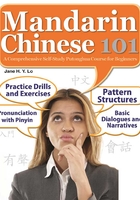
Pǔtōnghuà Pīnyīn
A. Initials: j, q, x


Notes
1 The finals that can be combined with j, q, x are limited to i and ü and the compound finals which start with i and ü.
2 When j, q, or x is followed by ü or a final beginning with ü, the two dots over ü are omitted and the ü appears as u. E.g. j + ü→ju.
B. Compound Finals: ia, ie, iao, iou
ia, ie are compound finals. When you pronounce them, the first vowel is very short and the shape of the mouth is very narrow, and then quickly glide to the second vowel,which is long and loud, and the shape of the mouth is wide opened.
iao, iou are also compound finals. When you read them, ‘i’ is soft and short. The second vowel is pronounced with the mouth wide open. Then quickly glide to the vowel wiich follows.

Compound Finals

Note
ê is different from ‘e’. It can never stand by itself. Its near equivalent is [e], as in bed and pen. It is combined with ‘i’, and ‘ü’ to form compound finals. In written form, ‘^’which is over ‘e’ is omitted . E.g. ie and üe.
Rules of Romanization
1. ia, ie, iao and iou are written as ‘ya’, ‘ye’, ‘yao’, ‘you’ when they stand alone as one syllable.
2. ‘iou’ is written ‘as -iu’ with the tone mark above ‘u’, when preceded by an initial. E.g.jiǔ, liù.
3. When ü combines with initials j, q, x to form syllables, the two dots over ‘ü’ are omitted. For example: j + ü→jǔ, q + ü→qù, x + ü→xū.